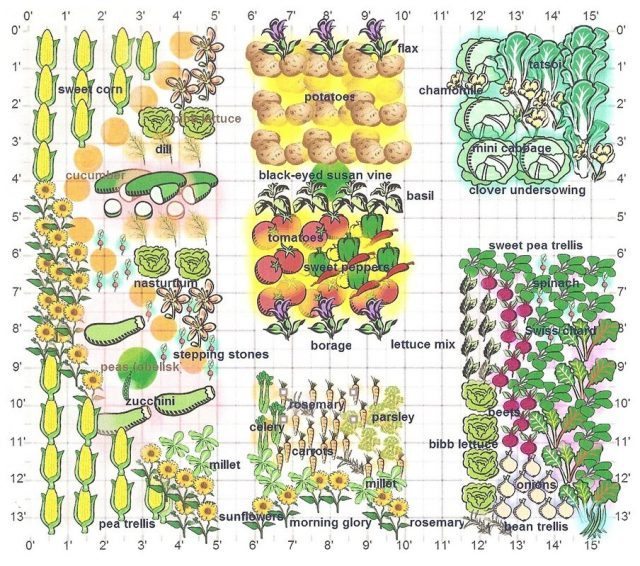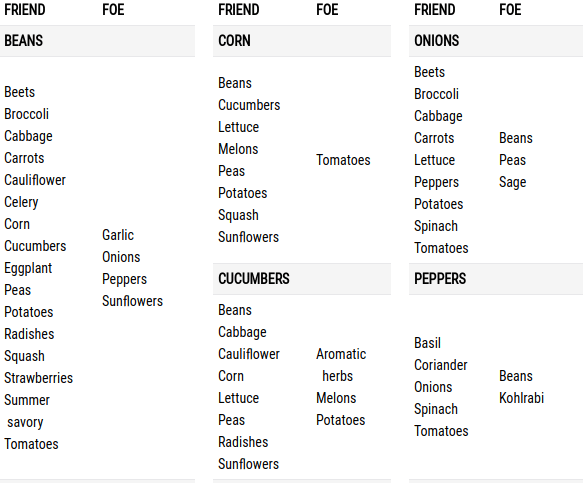Just like within our own communities, plants have both friends and foe. While planting you vegetables in their neat, organized rows may be satisfying for the gardener, this isn’t the best approach for your plants!

When we look around us, plants grow very differently in nature. There are clumps of plants that grow together, depending on one another for many reasons, and there are no rows to be found. While this may leave your garden looking messy, mimicking natural growing patterns will create more resilient plans, and help to reduce losses from insects or disease.
Certain plants grow more rapidly, crowding those around them, and taking more than their share of the sun, water and nutrients available. Other plants exude toxins, which can kill neighboring plants or slow their growth. The lay out of your vegetable garden is crucial for it to prosper.
When planting your garden, avoid long rows or patches. A large group of the same plant is a beacon for the pests that pray off that specific plant. Instead, interplant your vegetables with flowers and herbs. Mixing them together will make it harder for pets to locate the vegetables, and the scents will help to confuse pests in their search for food.
Take the time to learn which plant will help each other’s growth, and which will be problematic. For example, plants like parsnip, parsley, dill and carrots will attract ladybugs, spiders and praying mantises, which will prey upon the bugs that like to feed on your tomatoes.
Here is a list of the friends/foe for your vegetables:


What Are the Benefits?
There are four main benefits to companion planting.
- Crop Protection/Shielding
Planting the tougher varieties of plants around those that are more delicate, will allow a level of protection for the delicate plants. Tough plants are able to take the wind and sun, and act as a natural shield against the harsher conditions.
- Positive Hosting
There are several plants that produce a surplus of pollen and nectar, which will attract a larger population of beneficial inspects. This will enable you to manage the harmful pest population in your garden.
- Limiting Risk
While there are some elements that are out of your control as a gardener, you can work to increase your chances for success. By planting a wider variety of crops, you can protect your overall yield. In the event that one crop fails, or you are heavily hit by a specific pest or disease, other plants will continue to thrive.
- Trap Cropping
While pests are often attracted to one specific plant, they are in turn repelled by another. Planting these various plants next to each other will help you to control the pest population.